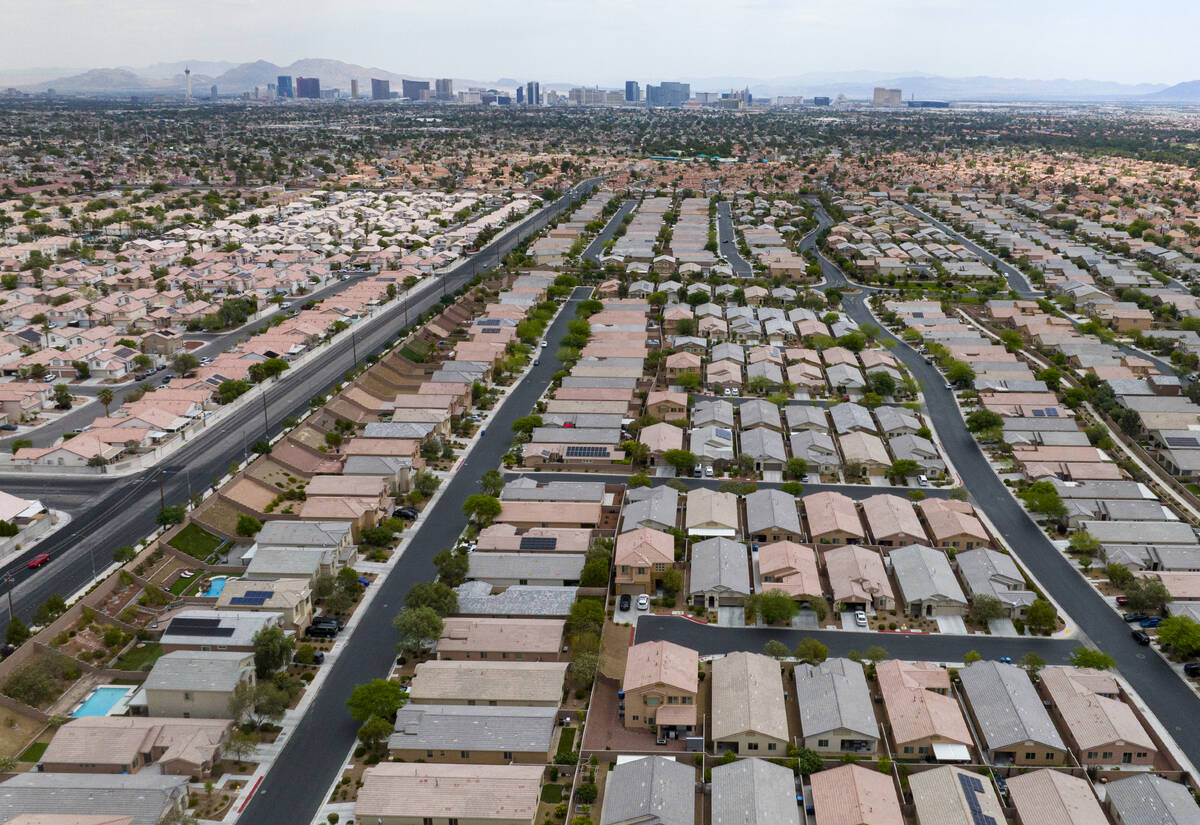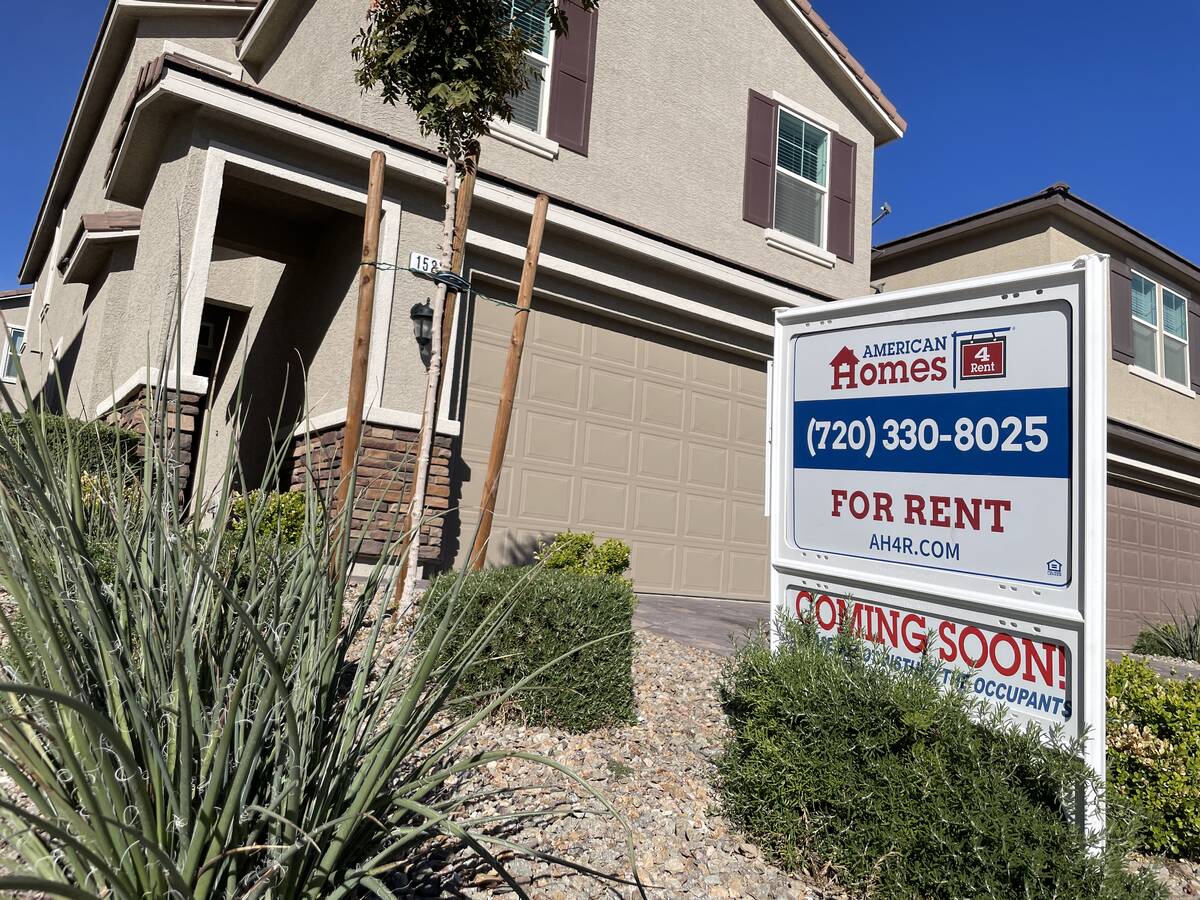Californians have been outcompeting Nevadans for homes for decades
When it comes to the shortage of affordable housing in the Las Vegas Valley, Bob Cleveland, president and chief executive officer for the nonprofit Rebuilding Together Southern Nevada, said the devil is in the details.
“Nevada provides tax credits for builders and developers to build affordable housing, and it’s a great deal, but those tax credits all have what are called periods of affordability and those are between 20 and 30 years,” said Cleveland, who works with low-income homeowners to help preserve homes through renovations.
Cleveland explained if a developer gets $40 million to build affordable housing, they are only obliged to rent those units out below market rate for a specific amount of time. Once that time limit is up, they go onto the regular market and never go back, he said.
There can be a net negative to the affordable housing stock over time, as the rolling average dwindles if new projects are not greenlit at the same pace that projects leave affordable housing status.
“The net growth has not been keeping up with the net need, and that’s just one issue,” he said.
It’s one of multiple reasons why the National Low Income Housing Coalition estimates Nevada is short approximately 83,000 affordable rental homes for “extremely” low-income households, which is above the national average and near the top of all 50 states. Clark County defines affordable housing as for those who have an average household income below 30 percent of the area income ($66,356).
Another big reason for the shortage of affordable housing is Nevada’s geographical proximity to the country’s largest state with the biggest population and highest average income — California.
Cleveland said Californians have been outcompeting Nevadans for homes for decades, and this has gotten worse since 2022 when the Federal Reserve started hiking interest rates to stem runaway inflation brought on by the pandemic.
“I hate to say it but it’s California, and that’s me growing up in the construction industry and I used to work for a builder (from 2004-09), and during the first boom that we had, I was the area manager for the Northwest and we would release a section of homes at 3 o’clock in the morning and there would be a line of people and almost all of them would be from California. And you had to put down $20,000 cash deposit just to get on the list to buy these houses.”
Californians have made up approximately a third of new residents moving to Nevada for decades, and now Los Angeles is the top city where people are moving to Las Vegas. The median household income in Southern California is well over $100,000, according to U.S. Census Bureau statistics, and it’s $66,000 in the Las Vegas Valley.
The average home price in Los Angeles is just under $1 million, according to Redfin, and in the Las Vegas Valley it’s $422,000. Cleveland said this creates an unfair advantage for Golden State residents to buy real estate in the local market.
“Our income is just not on par with California’s income,” he said. “So our housing prices have gone up because of the influx of California money, and our income hasn’t been going up so it makes it hard for the average Joe to keep up.”
How did we get here?
The Southern Nevada area, which encompasses the Las Vegas Valley, Pahrump, Mesquite and Boulder City, built approximately 11,000 new homes in 2023, a slight drop from 2022’s total of 11,225, according to data from the Southern Nevada Home Builders Association. Projections are for 11,500 new builds this year, continuing a steady trend in the market. There was an increase in builds during 2021, when 14,300 homes were completed, but comparing that to the wild volatility before makes that jump look like a blip.
Back in 1991, Southern Nevada saw 11,146 homes built, a number that shot up to 19,784 in 1996 and 21,162 in 1999. The record year for new home builds appears to have been 2006 when 36,000 homes were constructed heading into the Great Recession, a number that dropped all the way to 3,894 by 2011. The market then crawled back to normal by 2018 when 11,050 homes were built.
The pace of homebuilding across the entire country has yet to return to building levels seen before 2008, and this lack of new supply coupled with high interest rates and a locked housing market is now coming to a head across the nation, said Redfin’s chief economist Daryl Fairweather.
“This is definitely the main story of the housing market, the lack of affordable housing and the challenges such as demand outpacing supply and challenges in getting supply online when it comes to acquiring land or construction approval from the government,” she said. “And what continues to be a problem is there is a lack of support for building dense housing where people actually want to live, so homes in really desirable cities with plenty of jobs.”
Unlocking land
Dr. Mae Worthey-Thomas, deputy administrator for the Nevada Housing Division, said the entire country has been dealing with an overall housing shortage for years and the issue of affordable units is a “complex” one. The federal Bureau of Land Management owns approximately 67 percent of the state, or 48 million acres. In Clark County the BLM owns 2.9 million acres of the entire county’s 5.1 million acres.
The U.S. Department of Housing and Urban Development announced in August it had signed a memorandum of understanding to make public lands available for $100 an acre for the construction of affordable housing in Southern Nevada. Worthey-Thomas said this is one of the fronts in the fight, accessing land for affordable housing projects.
“Southern jurisdictions (in Nevada) and a few key developers have worked diligently with BLM and HUD the past few years to bring as much efficiency to the process within the confines of the current laws to make land available at a significant discount in exchange for the commitment to build income and rent-restricted housing that is affordable to low income Nevadans,” she said in an email response to the Las Vegas Review-Journal. “It is still not perfect, but it is better. There are efforts at the federal level by our Congressional delegates to increase the amount of acreage available with a prioritization for affordable housing.”
Clark County kicked off its “Welcome Home” initiative in 2022, the county’s first community housing fund, approving more than $100 million to support the construction and rehabilitation of affordable rental units, and since its inception, Welcome Home has pumped $170 million into trying to help solve the issue.
The private sector has also been trying to help as Bank of America recently gave $383,000 in grants to six local nonprofits in the Las Vegas Valley which help with issues such as homeownership education and affordable housing. Clark County estimates for extremely low-income households there are 14 affordable rental units per 100 homes in Clark County, which is the second fewest among all counties in the nation, according to the National Low Income Housing Coalition.
Cleveland said if he had a magic wand to fix affordable housing, the first thing he would do is change the details around funding, so the rolling average of affordable units can catch up and knock down that 83,000 number over time, instead of let it grow.
“I would change the way the state funds affordable housing,” he said. “I think that’s the biggest first step they can take is there has to be a clause in there that affordable housing stays affordable in perpetuity.”
Contact Patrick Blennerhassett at pblennerhassett@reviewjournal.com.




















